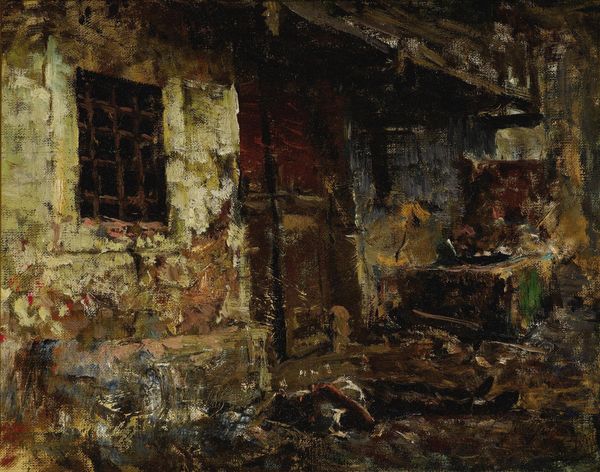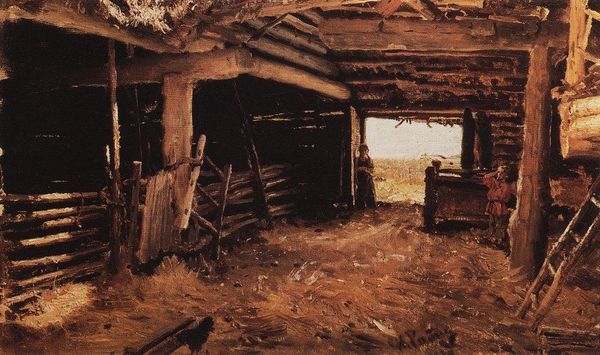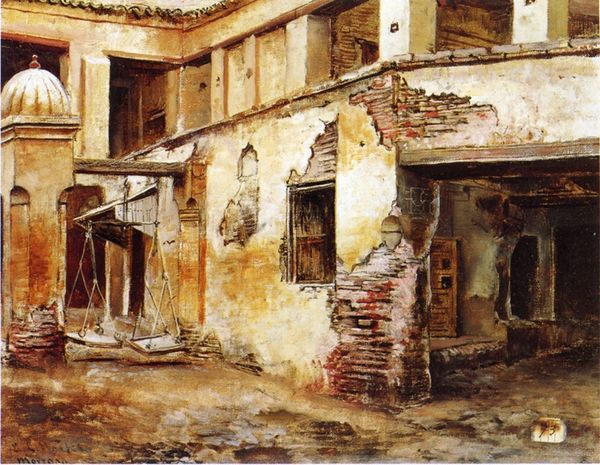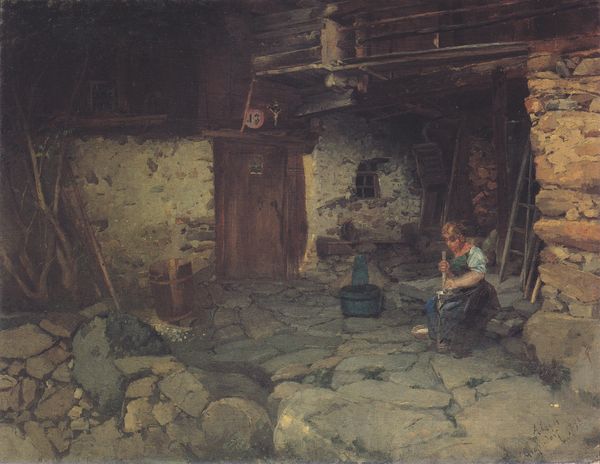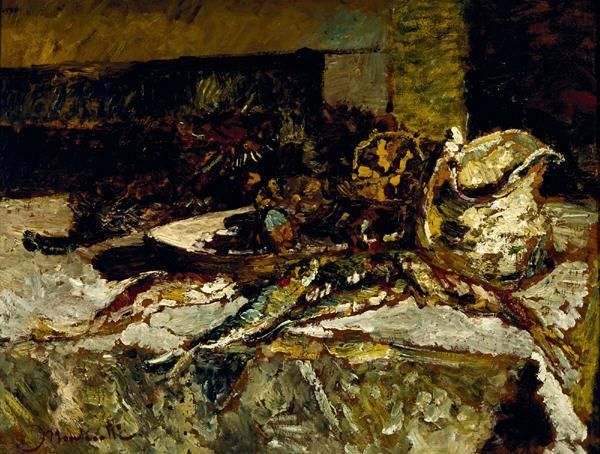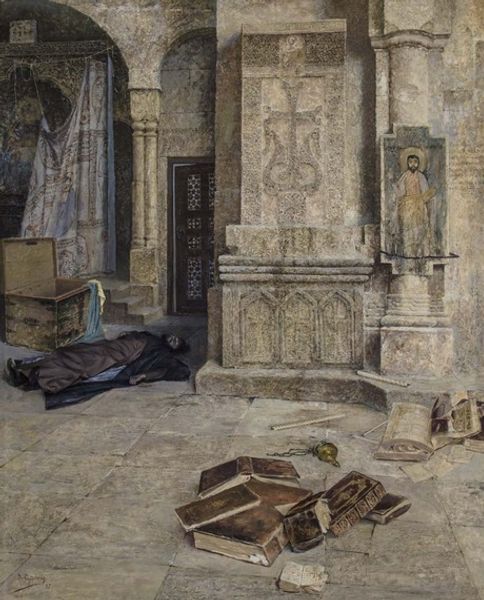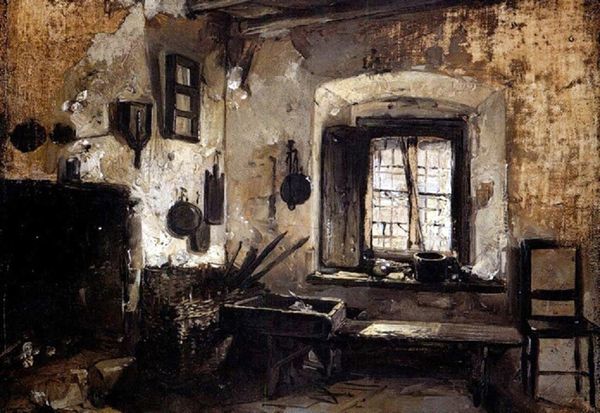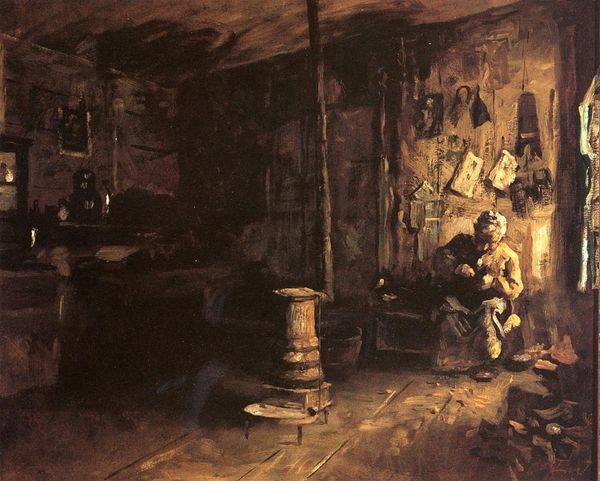
Dimensions: 71.1 x 91.5 cm
Copyright: Public domain
Curator: Sargent’s “Moorish Courtyard,” painted in 1913, captures a light-drenched interior. There's a strong sense of place evoked by the textures and architectural details. Editor: The palette feels restrained, almost bleached, creating a feeling of languor and perhaps even colonial-era ennui. The courtyard feels less like a bustling center and more like a stage. Curator: Look at how Sargent built the layers of this painting, paying great attention to the properties of the materials. The oil paint has been applied in such a way that the rendering is a series of carefully rendered brushstrokes; from the plastered walls to the two burdened donkeys. Note, also, the plein-air approach suggesting that it was all painted outdoors in situ. Editor: Exactly, the two donkeys serve as weighted presences within this curated space. This work feels inherently steeped in orientalism and invites us to consider the cultural dynamics at play. Who occupies this space, and what's their labor? The light isn't simply descriptive; it casts the scene with shadows that speak to both exposure and hidden histories. Curator: The technical mastery of capturing light is striking. Consider how the artist built his reputation and studio. Sargent, while associated with the wealthy elite through portraiture, also consistently explored techniques beyond academic orthodoxy, favoring rapid execution that also suited a market always eager to consume new work. Editor: Yes, it is pretty; and it masks a power dynamic and a voyeuristic gaze, but from the perspective of 2024 it encourages an interesting discourse around post-colonial identities. The composition seems deliberately off-center; suggesting that we have perhaps just stepped inside as we pass through. There’s no dramatic human activity to engage with other than to simply witness this space from a Eurocentric perspective. Curator: Seeing this today really lets us consider how a painting itself acts as an object. And consider its trajectory through the market, the auction houses, the private collections – its entire material life as a commodity. Editor: Absolutely. This seemingly innocent courtyard scene then provides a complex backdrop for us to unpack broader societal structures, issues of cultural representation, labor, and class. I’m struck how just simply "observing" creates a silent dialogue between ourselves and its history.
Comments
No comments
Be the first to comment and join the conversation on the ultimate creative platform.
